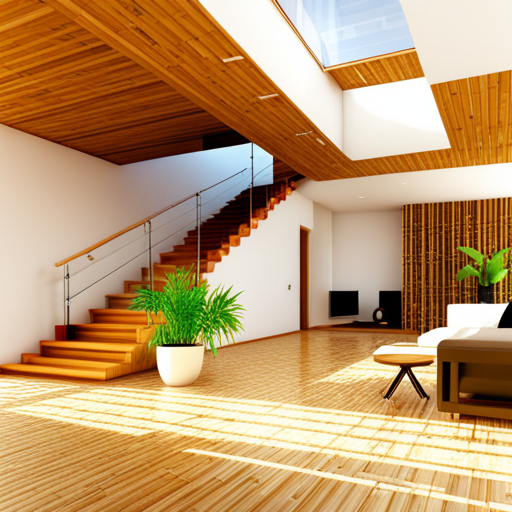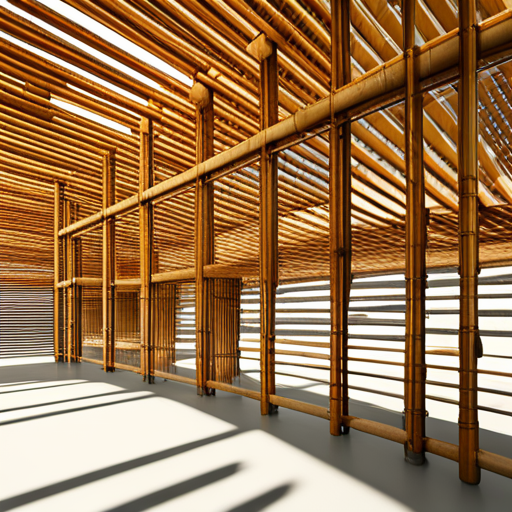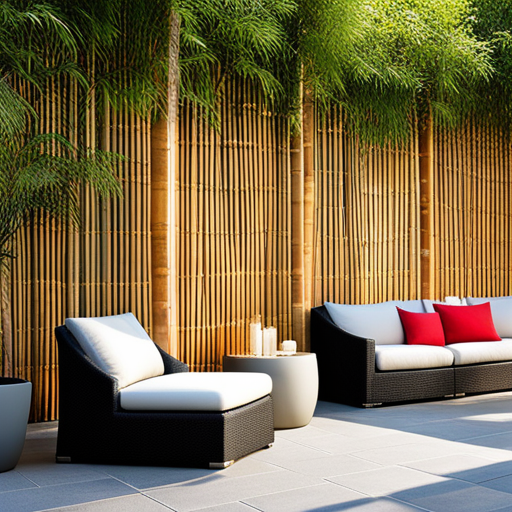Bamboo, a perennial evergreen plant belonging to the grass family, is renowned for its versatility and widespread applications in various industries. This article explores the multifaceted uses of bamboo in construction, furniture making, and privacy purposes.
In the realm of construction, bamboo is highly regarded for its strength and durability. Its solid culms, which are thicker and more resistant to bending, make it an ideal material for structural purposes. Additionally, bamboo’s rigidity and stability contribute to its popularity as a construction material in its native regions.
Moreover, bamboo is widely utilized in furniture making due to its natural beauty and versatility in shaping. However, the hollow culms of bamboo, while easier to treat and shape, are prone to splitting and rotting.
Nonetheless, bamboo remains a favored choice for creating privacy in gardens, patios, and other outdoor spaces, thanks to its dense growth and tall stature.
With its diverse range of applications, bamboo stands as a valuable and versatile plant in various industries.
Contents
- 1 Our Highlighted Points
- 2 Uses in Construction
- 3 Strength and Durability
- 4 Privacy Applications
- 5 Is lucky bamboo the same as traditional bamboo and can it also be used for construction and furniture?
- 6 Frequently Asked Questions
- 6.1 How can bamboo be used in construction other than for building structures?
- 6.2 What are the factors that affect the strength and durability of bamboo?
- 6.3 Are there any specific privacy applications where bamboo is not recommended?
- 6.4 Can bamboo be used as a sustainable alternative to traditional furniture materials?
- 6.5 Are there any concerns or drawbacks to using bamboo for privacy purposes?
Our Highlighted Points
- Bamboo culms can be classified as solid or hollow, with solid culms being stronger and more resistant to splitting and rot, making them ideal for construction and furniture making.
- Hollow culm bamboo is structurally straight and easy to treat and shape, but it is more prone to splitting and rotting.
- Bamboo is commonly used as a construction material in its native regions and is highly efficient due to its rigidity and stability.
– The right bamboo species can be chosen for privacy purposes, and non-invasive clumping bamboo species are recommended for maintenance.
Uses in Construction

Bamboo is commonly utilized as a construction material due to its strength, resistance to splitting and rot, and the rigidity and stability provided by the hollow culms.
Bamboo in sustainable architecture is gaining popularity as it is a renewable resource that grows quickly and can be harvested without harming the environment.
Its strong and durable nature makes it suitable for various construction applications, such as flooring, walls, and even structural elements.
Bamboo is also used in the production of furniture, where its solid culm varieties ensure durability and stability.
Additionally, bamboo’s natural aesthetic qualities add a unique touch to architectural designs.
As a renewable and versatile material, bamboo contributes to sustainable and eco-friendly construction practices, making it a preferred choice in the field of architecture and design.
Strength and Durability

Strength and durability of bamboo culms make them highly suitable for various applications in the field of engineering and design. Bamboo, particularly solid culm bamboo, is widely used in furniture making due to its impressive strength and resistance to splitting and rot. The thick walls and visible nodes of solid culm bamboo enhance its structural integrity, making it a reliable choice for constructing durable furniture pieces. Additionally, solid culm bamboo’s rigidity and stability are highly beneficial in creating sturdy and long-lasting structures. To illustrate the benefits of solid culm bamboo, the following table highlights its key advantages in furniture making:
| Benefits of Solid Culm Bamboo in Furniture Making |
|---|
| High strength and durability |
| Resistance to splitting and rot |
| Structural stability |
| Reliability in construction |
Incorporating solid culm bamboo in furniture not only adds a touch of natural elegance but also ensures longevity and sustainability in design.
Privacy Applications

Privacy applications of bamboo culms are highly sought after due to their natural properties and aesthetic appeal. Bamboo fencing and bamboo screens are popular choices for creating privacy in outdoor spaces.
Bamboo culms, with their tall and dense growth, provide an effective barrier against prying eyes. Bamboo fencing is often used to enclose gardens, patios, or swimming pools, offering a natural and eco-friendly alternative to traditional materials.
Bamboo screens, on the other hand, can be used to partition larger areas or create secluded corners within a space. Additionally, bamboo’s versatility allows for various design options, such as using different bamboo species or combining bamboo with other materials.
With proper installation and maintenance, bamboo privacy applications can provide long-lasting protection while adding a touch of natural beauty to any outdoor setting.
You may also like to read how to prevent mosquito breeding in your bamboo.
Is lucky bamboo the same as traditional bamboo and can it also be used for construction and furniture?
Lucky bamboo indoor plant is not the same as traditional bamboo. It is a smaller and more delicate variation that is often used for decorative purposes in homes and offices. Unlike traditional bamboo, lucky bamboo is not suitable for construction or furniture due to its size and flexibility.
Frequently Asked Questions
How can bamboo be used in construction other than for building structures?
Bamboo can be used in construction for purposes other than building structures. It can be utilized as flooring, providing a sustainable and durable alternative to traditional materials. Additionally, bamboo can be incorporated into decorative elements, adding a unique and natural touch to interior design.
What are the factors that affect the strength and durability of bamboo?
Factors that affect the strength and durability of bamboo include the type of culm (solid or hollow), wall thickness, presence of visible nodes, treatment methods, and proper maintenance. These factors contribute to the overall stability and resistance to deformation of bamboo.
Are there any specific privacy applications where bamboo is not recommended?
Bamboo may not be recommended for privacy applications in areas with strong winds or extreme weather conditions as it can be prone to bending, splitting, and rotting. Other materials may be more effective in these situations.
Can bamboo be used as a sustainable alternative to traditional furniture materials?
Bamboo furniture has gained popularity as a sustainable alternative to traditional materials. Bamboo’s fast growth rate, renewable nature, and durability make it an environmentally friendly choice. It can be used for various furniture applications, contributing to sustainable practices in the industry.
Are there any concerns or drawbacks to using bamboo for privacy purposes?
Privacy concerns with using bamboo for privacy purposes include its limited height, potential for gaps between culms, and the need for regular maintenance. Additionally, the environmental impact of bamboo cultivation and transportation should be considered.

